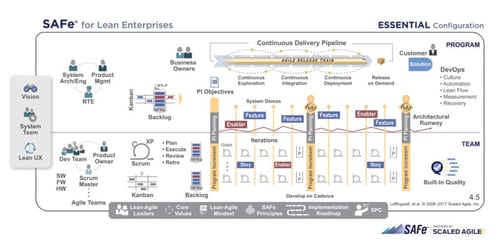Facilitation — the key skill of every project manager
.jpg?width=1800&height=1200&name=Loihde_some%20(66).jpg)
Successful facilitation can make projects work like magic. Why? Facilitation is a process of helping people collaborate towards a shared understanding and goal by generating interest and excitement. It responds perfectly to the common need for socialization after the COVID-19 pandemic but most of all, it matches with the needs that the trend of rapid transformation (Forbes 2022) creates for organizations, ensuring their competitiveness and survival in the future:
- Organizations become flatter, leaner and more agile-structured in order to reorganize teams quickly, reduce unnecessary work and respond quickly to change. This requires lean-thinking and holistic cross-functional collaborative projects where facilitation is the key to success.
- To evolve and learn faster, organizations and employees share their experiences and competences in cross-functional and cross-organizational integration projects, where their learning can be facilitated.
- Organizations seek purposeful business to make their work more meaningful and to strive for a better world. This is often continuous instead of project-like, but facilitation can help organizations bring people together and define the common purpose of organization’s being.
The best thing about facilitation is that, just like any skill, it can be learned and cultivated. It also requires humans instead of digital automation. Though, as the business environments are changing more and more rapidly, finding a nice balance between automatic facilitation and the actual art of facilitation is also important in the future. Nevertheless, projects that provide flexibility and opportunity for growth as well as “leaning” the organization make a great pair with facilitation, especially for agile-enthusiast organizations.
Projects are like journeys: they have a beginning, a middle and an end. What happens in the middle is a unique story that can be traditional, agile or a mixture of these – depending on the organization’s business and strategic choices. Regardless of the way of implementing the project, the journey can be magical at its best and catastrophic at its worst. The key to making it magical is facilitation.
An easy way to understand this is to imagine a project without a project manager facilitating it: there is no process to follow, no order for completing the tasks, no planned meetings, no collaboration between people, no clear goals or clear understanding of the project’s purpose, and so on. It would be chaos without connections and leadership. Sounds like quite a mess, doesn’t it?
Now let’s imagine a project, where the magic happens: a project manager clarifies the big picture and a clear path forward towards a shared goal set by the team. Usually project managers manage to excite and engage the team members continuously throughout the facilitated journey and events – making sure everyone can bring their best to the table and contribute. They are masters of facilitating different kinds of events that make participants recognize and absorb positive feelings. The project manager can facilitate traditional and agile projects with waterfall, lean, kanban, safe or scrum techniques or with a mixture of those – ensuring that the team has optimal sprint cycles and/or milestones for development and that the team can proceed in the iterative process. The project manager includes user experience design methods into the facilitation process to make sure the end-results are tested and loved by the users. No money and resources are wasted for something that has no demand in the market. The project manager is also skilled in facilitating, publishing and launching events together with the team, where new innovative solutions attract interest among potential collaborative partners, end-users and clients. During the project, the team picks up new facilitating methods, applies them and explores them further in the future. Sounds pretty cool, right?
The reality is not always so easy and honeymoon-like. But like mentioned before, facilitation is a skill that can be learned and that continuously gives triggers to learn even more. Here are some tips that help you dive deeper into your facilitation journey in project management:
- Put other people first: Client, end-user, participants and your team always go first – put them in the centre of your project facilitation. The project event is for and about them, not about you. Let them grow. Discover participant and student-focused facilitation methods.
- Let others influence: Listen to your team of experts, end-users and stakeholders. Doing things together is better than solo play. Involve and engage them in every project activity they are interested in – and feed their excitement through facilitation by talking about the things they have already had an impact on.
- Support growth: Put on competence development glasses. Consider what project event participants and stakeholders can learn in the event. Design learning goals for each project event (in addition to your other project goals), and follow-up their realization in the end of the event.
- Innovate new methods: Know the common facilitation methods and techniques, but don’t get fixated on them. Develop and co-innovate your and your team’s own facilitation methods and test them in your project. After all, what could be more fun than co-creating something new? Remember that the project outcomes must serve the project purpose – the way to get there can vary in multiple directions.
- Visualise linkages: Use visual facilitation techniques to build linkages between project events, actions and people, but also to project impacts and connections to holistic picture of organizational operations. This way you can boost peoples’ feeling of meaningfulness at work.
Author




